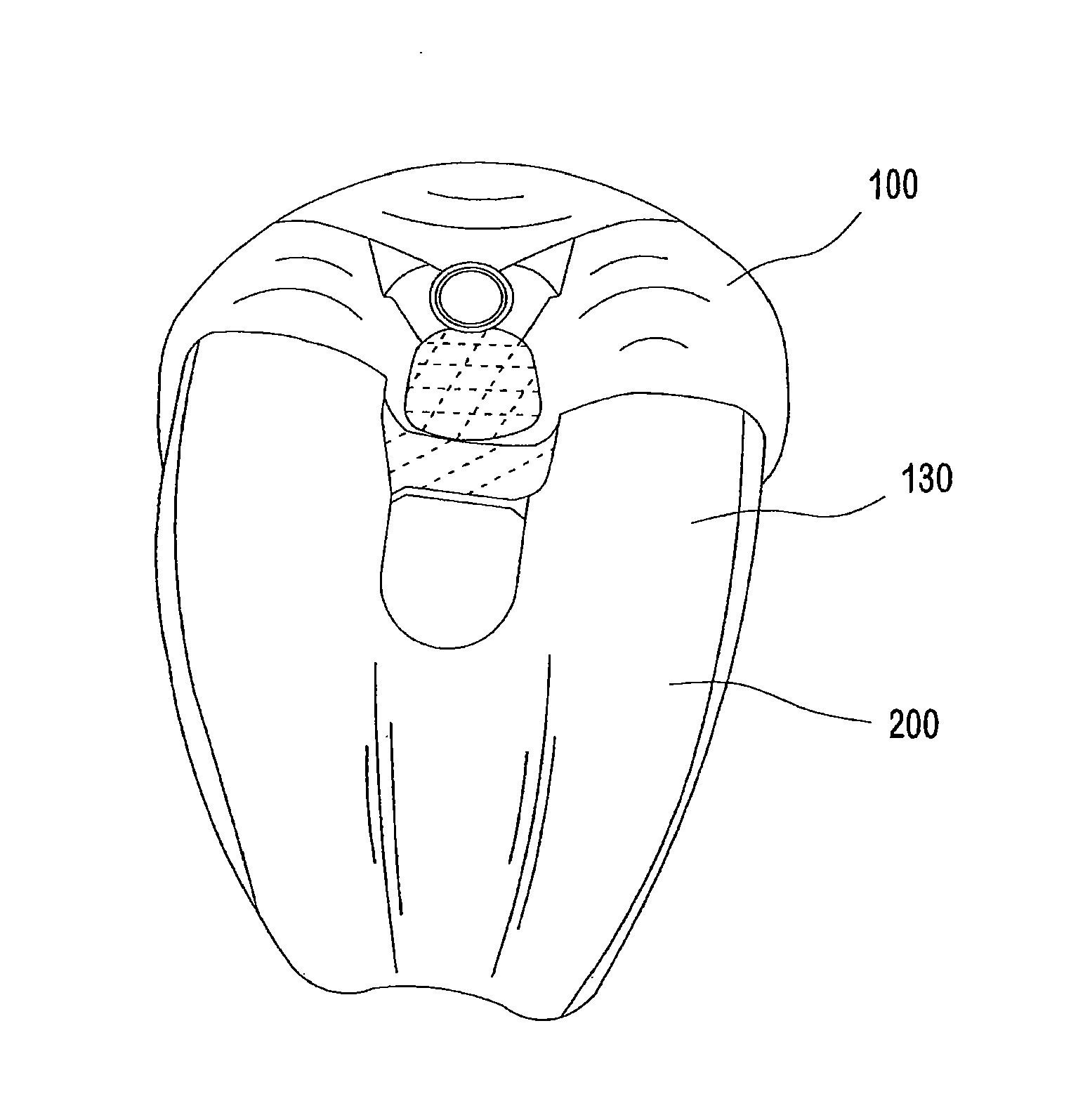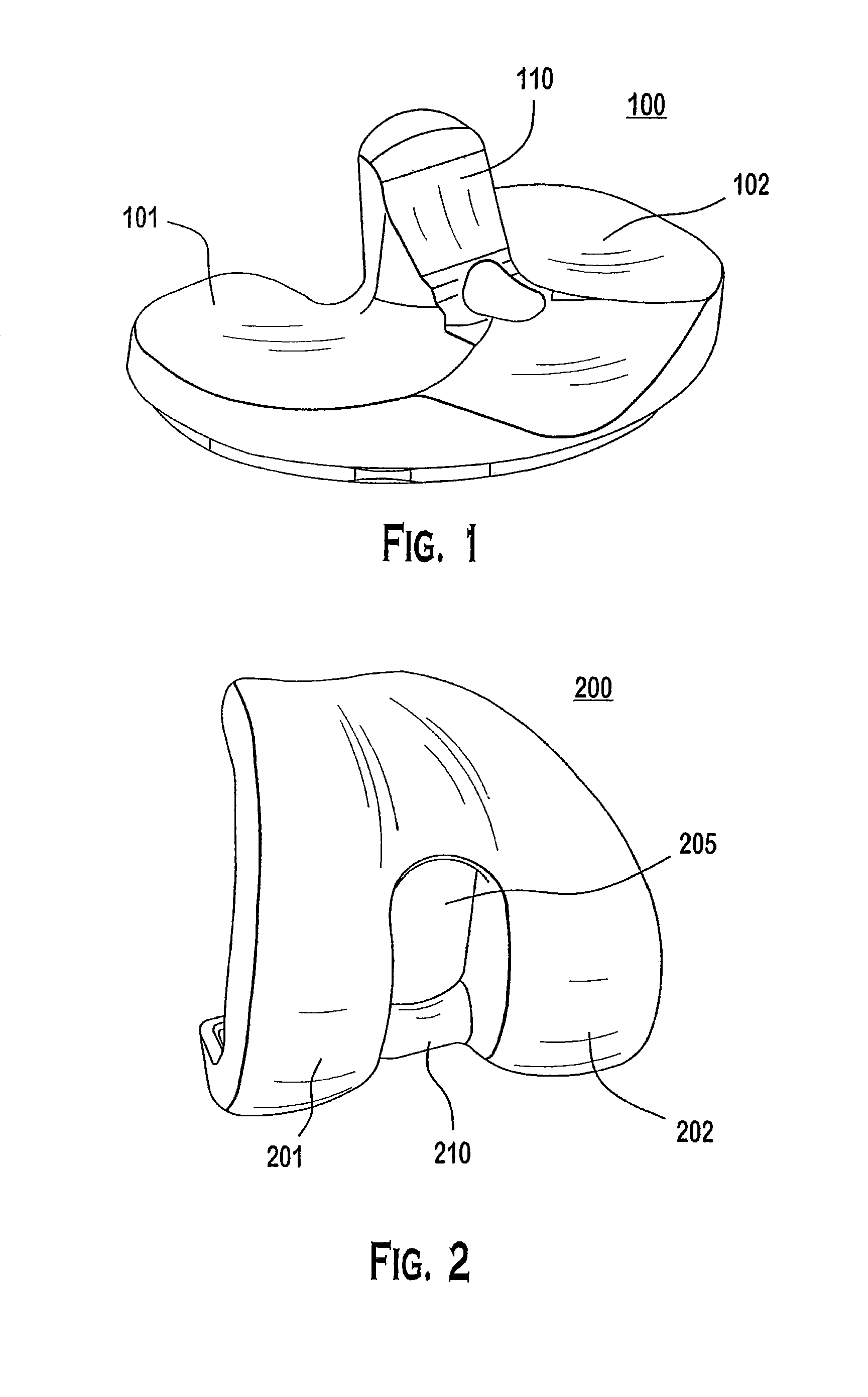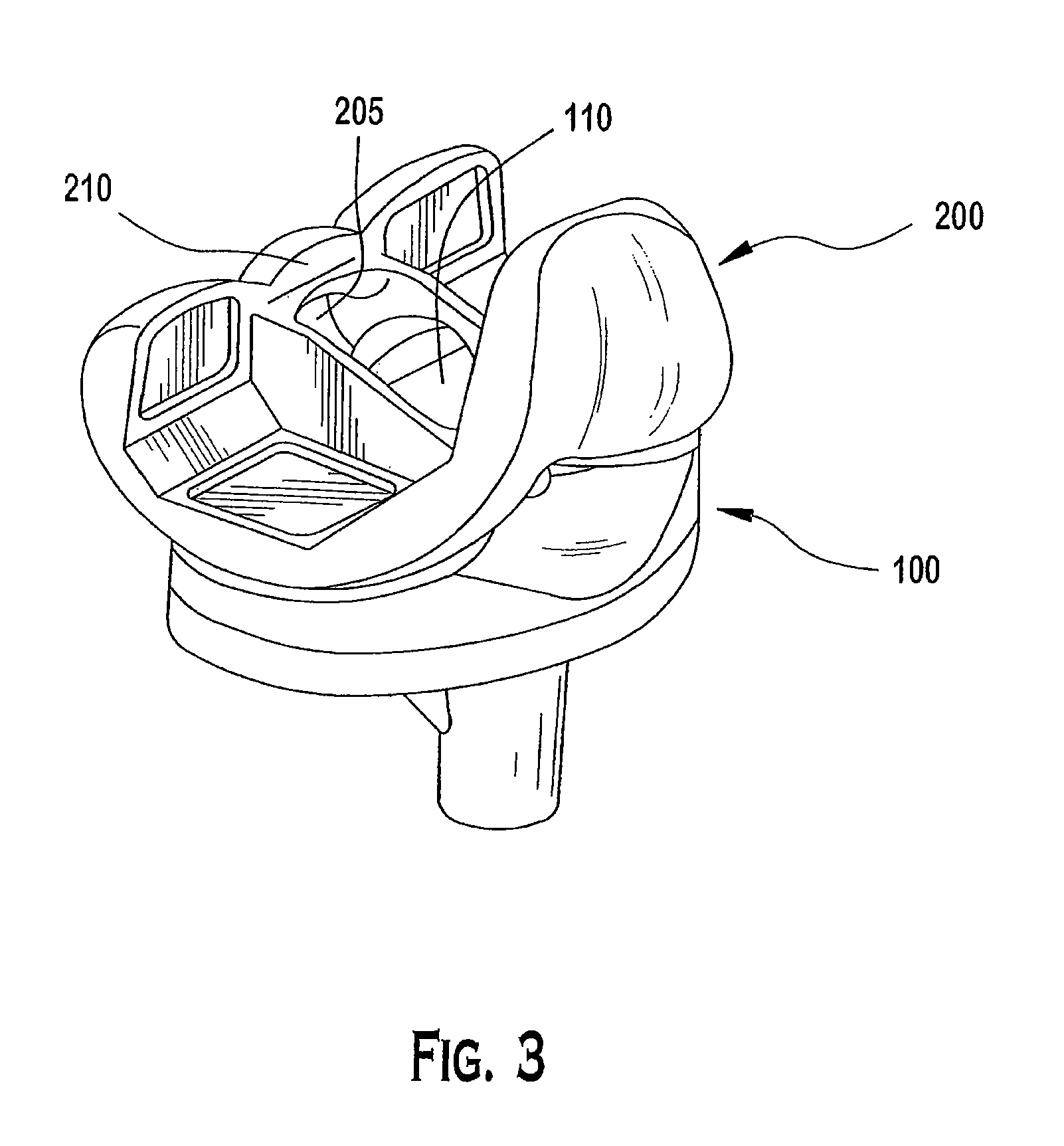Knee prosthesis
a knee joint and prosthesis technology, applied in the field of knee joints, can solve the problems of no longer providing support to the knee joint, ligament damage or rupture, etc., and achieve the effect of preventing the paradoxical roll forward
- Summary
- Abstract
- Description
- Claims
- Application Information
AI Technical Summary
Benefits of technology
Problems solved by technology
Method used
Image
Examples
Embodiment Construction
[0037]The present invention provides a knee prosthesis which allows for anatomically correct knee movement. It does so by providing an upper, or femoral, component which is designed to mechanically interact with a lower, or tibial, component to achieve kinematic movement consistent with a natural knee joint. Generally, the two pieces interact by providing several different contact surfaces, not all of which are engaged between the two components of the knee throughout the range of motion.
[0038]Two such contact surfaces are the load bearing condylar surfaces between the femoral component and the tibial component. These surfaces are defined by medial and lateral condylar surfaces which are referred to as the load bearing surfaces for a given knee joint. Specifically, a medial load bearing surface is defined between the medial femoral condyle and its counterpart on the tibial component, namely a medial tibial accommodating surface. Likewise, a lateral load bearing surface is defined be...
PUM
 Login to View More
Login to View More Abstract
Description
Claims
Application Information
 Login to View More
Login to View More - R&D
- Intellectual Property
- Life Sciences
- Materials
- Tech Scout
- Unparalleled Data Quality
- Higher Quality Content
- 60% Fewer Hallucinations
Browse by: Latest US Patents, China's latest patents, Technical Efficacy Thesaurus, Application Domain, Technology Topic, Popular Technical Reports.
© 2025 PatSnap. All rights reserved.Legal|Privacy policy|Modern Slavery Act Transparency Statement|Sitemap|About US| Contact US: help@patsnap.com



